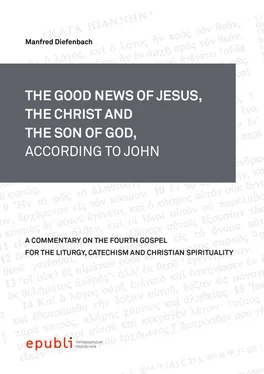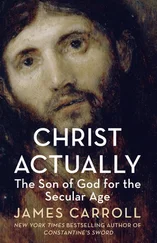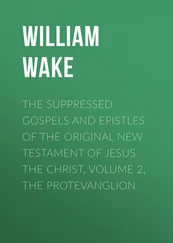v. 40:Jesus realizes that they “( ) will ” (vv. 35b, 40a) “( not ) come to ” Him who “ have life” – “eternal life” – for them. In other words: Jesus’ Jewish opponents did not want a relationship with Him as the “Son of God” and their “Saviour” (v. 34c) because of the Torah/Law of Moses.
v. 41:As in verse 34, Jesus emphasizes with the help of a correction 455(“not … but”) that He does “(not accept/receive ) glory 456” (vv. 41, 44b, c) “ from human ” (vv. 34a, 41) “/ beings /” (cf. 1 Thessalonians 2:6),
v. 42:“but” He “ knows ” (cf., for example, vv. 6a, 42a and John 1:48; 2:24; 6:15) His Jewish opponents that they do “( not have ) the love of God ( ) ( with -) in ” them (cf. Luke 11:42; 1 John 2:15).
v. 43:Then He warns them in the form of an antithetic parallelism/a contrast in verses 43–44:
“ I have come in the name of ( My ) FATHER ( )” (cf., for example, John 10:25),
and you / do / not accept/receive Me ” (cf. 1:11).
Jesus continues with a prophecy/prediction as a “ futurum propheticum ” 457:
“ If another comes in [/ his / … own ] … name [ ],
{} you will accept/receive { him }” (cf. Mark 13:6; Matthew 24:5; Luke 21:8).
v. 44:“ How ” (in Greek “ p õ s ” in vv. 44a, 47b – note the inclusion) “ can you believe ” (in Greek “ p ɩ steúo ” in vv. 24b, 38c, 44a, 46a, b, 47a)
when “( ) you accept / receive (glory” (vv. 41, 44b, c) “from / one / another )” (cf. Matthew 23:5–7)
“ and ” do “[ not seek ] the glory from the only God [ ]” (cf. John 12:43 and Romans 2:29; 1 Timothy 1:17 – Deuteronomy 6:4; 2 Kings 19:15, 19; Isaiah 37:20; Daniel 3:45 [LXX]).
v. 45:Do “ not think
that I will accuse 458 you to the FATHER .
/ There / is / one /
who accuses you :
Moses 459” (cf., John 7:19), “ on whom, you have set / your / hope 460”.
v. 46:“ For if you believed Moses” (cf. Exodus 14:31),
“ you would believe … Me for … ( ) … he wrote (/ of / Me )” in the Torah as the so-called “books/Law of Moses” which are epigraphical, that means another author/s respectively editor/s published these five books – these are Genesis, Exodus, Leviticus, Numbers, Deuteronomy – in using the name of the Jewish authority “Moses”.
v. 47:“( But ) if ( ) [ you / do / not believe 461]” (vv. 38c, 47a) “/ his / writings 462[ ]” (cf. Luke 16:31)
“how” (vv. 44a, 47b) “{will you believe} My words 463{ }?”
After Jesus’ multiplication of the five loaves of bread and two fish for about 5,000 men (cf. 6:1–15) and His walking on the water (cf. vv. 16–21) as His (marvelous) deeds , the main topic of Jesus’ dialogical 464discourse of “the Bread of Life” (cf. vv. 25b–58) as a homily 465respectively as “a deeper lesson” 466with several quotations 467of the Hebrew Bible that we Christians called “Old Testament”, centres on verse 31c: “ He gave them bread from Heaven to eat ” and “ I am the Bread of Life ” (v. 35b). Chapter 6 focuses on the topic of Jesus as “the Bread of Life”.
The story of the multiplication of the bread and His feeding of 5,000 is like an overture of the sixth chapter. The multiplication of the loaves is structured with the help of the phrase “ after this ” in verse 1a and the preposition “ then ” in verses 5a, 11a, 13a, 14a, 15a.
The reflection about Jesus’ saying in verse 31 which is in the form of a dialogue between the Jew Jesus and “the Jewish people” is structured with the help of both
- “ I am the Bread of Life ” in verses 35b and 48;
- the introductory phrase “ amen, amen I said to them ” in verses 26b, 32b, 47a, 53b.
In the midst of the (Eucharistic) discourse, somebody – “ the Jews ” (vv. 41a, 52a) and some disciples of Jesus (cf. vv. 60–61, 64, 66) – intervene and contradict Jesus’ self-revelation 468. Step by step, the Fourth Evangelist meditates the sense of this sentence of Jesus as “the Bread of Life” and “the giver of the bread” like a new Moses in six steps 469:
- First dialogue between the crowd and Jesus (vv. 25b–27)
- Second dialogue between the crowd and Jesus (vv. 28–29)
- Third dialogue between the crowd and Jesus (vv. 30–33)
- Fourth dialogue between the crowd and Jesus (vv. 34–40)
- Fifth dialogue between “the Jews” and Jesus (vv. 41–51)
- Jesus’ Eucharistic Discourse (6 th) as a monologue 470(vv. 52–58/59)
After the discourse about Jesus as the (sacramental) “ Bread of ( eternal ) Life ” (cf. vv. 25b–58/59) and as the divine “ Son of Man ”, the verses 60–71 resume the murmuring criticism of verses 41a, 43b and 52a to describe a mounting crisis of faith of His disciples. His Eucharistic discourse is the source of division and disbelief of His disciples.
“HERE is a passage … with tragedy, for in it is the beginning of the end. There was a time when men came to Jesus in large numbers” (cf. 2:23; 4:1–3, 39, 45). “Already John launches us on the last act of the tragedy. It is circumstances like these which reveal men’s hearts and show them in their true colours. In these circumstances there were three different attitudes to Jesus:
(i) There was defection . Some turned back and walked with him no more. They drifted away for various reasons. […]
(ii) There was deterioration . It is in Judas above all that we see this. Jesus must have seen in him a man whom he could use for his purposes.” […] (cf. vv. 70–71)
(iii) “There was determination . This is John’s version of Peter’s great confession at Caesarea Philippi (Mark 8: 27; Matthew 16: 13; Luke 9: 18” 471; John 6:68–69)
2.3.3 Jesus’ Multiplication of the Loaves and Fish and the Feeding of 5,000 (vv. 1–15 472)
The stories of the feeding in the Gospels are identical in construction and content (cf. Mark 6:32–44; Matthew 14:13–21; Luke 9:10–17; John 6:1–15 and Mark 8:1–10; Matthew 15:32–39 – the second story in the Gospels of Mark and Matthew only differ in the setting of the dialogues, the task of Jesus’ disciples, and the number of the loaves):
| Topic |
John 6 |
Mark 6 |
Matthew 14 |
Luke 9 |
| “ 5,000 men ” |
v. 10d |
v. 44 |
v. 21 |
-/- |
| “ 5 loaves and 2 fish ” |
vv. 9b, 13b |
vv. 38, 41 |
vv. 17, 19 |
v. 13 |
| “ 12 wicker baskets full ” |
v. 13 |
v. 43 |
v. 20 |
v. 17 |
Further the texts in the Gospels correspond with the story of the multiplication by the prophet Elisha (cf. 2 Kings 4:42–44 473):
| Topics |
2 Kings 4:42–44 |
John 6:1–15 |
| - The number of the loaves |
v. 42c: “ 2 1 ripe grain ” |
v. 9b: “ 5 loaves and 2 fish ” |
| - The order to feed the hungry men through servants or His disciples |
|
v. 5 |
| - Their intervention |
v. 42d–e |
v. 7/Mark 6:37c–d |
| - The number of people |
v. 43b |
v. 10d 2: “ about 5.000 ” |
| - They gave them the loaf |
v. 43b: “ 100 men ” |
v. 11c–d |
| - The eating by the men |
v. 44a |
v. 11e–12a, 13c |
| - The fragments of the loaves |
v. 44a–b |
v. 13b: “ 12 wicker baskets full ” |
- The Setting (vv. 1–4)
Читать дальше












